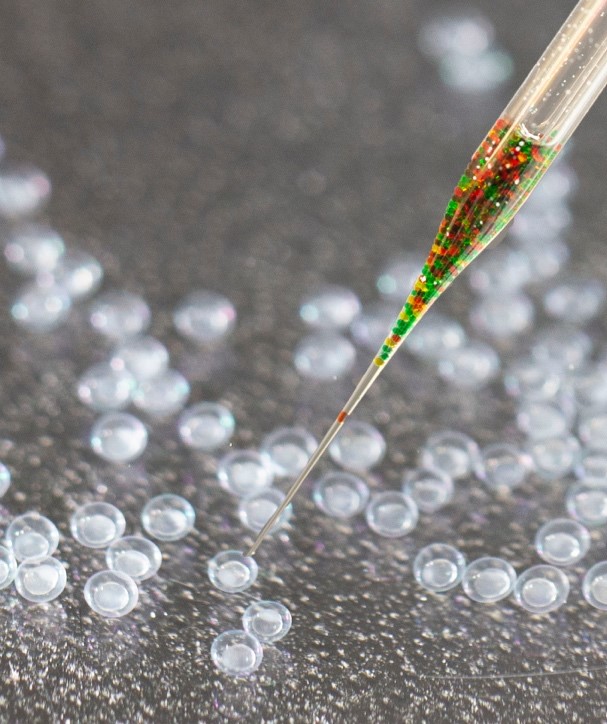
Genome editing methods, such as the Nobel prize–winning CRISPR technology, enable scientists to make precise changes to genetic code. Beyond the potential to correct disease-causing mutations in humans, researchers discover genes’ functions by disrupting targeted genes in flies, fish, and other organisms and observing the effects on health and behavior. However, until recently, only one gene could be targeted at a time.
University of Utah Health researchers from the labs of Joseph Yost, PhD, and Randall Peterson, PhD, recently developed a method to target thousands of genes in parallel, rapidly accelerating discovery. Their Multiplexed Intermixed CRISPR Droplets (MIC-Drop) technique packages CRISPR components into tiny, oil-encased droplets, which each include a DNA “barcode” and can mingle without exchanging contents. By injecting a droplet into an organism, researchers can simultaneously edit a gene and mark the animal with easily recoverable information about which gene was targeted. The team has used MIC-Drop to identify sixteen genes that are critical for healthy heart development and function, and expects it to continue to accelerate the discovery of gene functions.
References:

MIC-Drop: A platform for large-scale in vivo CRISPR screens. Parvez S, Herdman C, Beerens M, Chakraborti K, Harmer ZP, Yeh JJ, MacRae CA, Yost HJ, Peterson RT. Science. 2021 Sep 3;373(6559):1146-1151.
Press Releases and Media:

University of Utah Health: “CRISPR-based Technology to Speed Identification of Genes Involved in Health, Disease”

